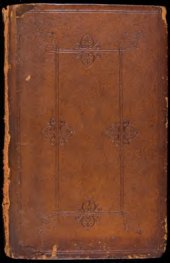
Ebook: A Guide to Protein Isolation
Author: Clive Dennison (auth.)
- Tags: Biochemistry general, Chemistry/Food Science general
- Series: Focus on Structural Biology 3
- Year: 2003
- Publisher: Springer Netherlands
- Edition: 2
- Language: English
- pdf
It is a truism of science that the more fundamental the subject, the more universally applicable it is. Neverthelens, it is important to strike a level of "fundamentalness" appropriate to the task in hand. For example, an in-depth study of the mechanics of motor cars would tell one nothing about the dynamics of traffic. Traffic exists on a different "level" - it is dependent upon the existence of motor vehicles but the physics and mathematics of traffic can be adequately addressed by considering motor vehicles as mobile "blobs", with no consideration of how they become mobile. To start a discourse on traffic with a consideration of the mechanics of motor vehicles would thus be inappropropriate. In writing this volume, I have wrestled with the question of the appropriate level at which to address the physics underlying many of the techniques used in protein isolation. I have tried to strike a level as would be used by a mechanic (with perhaps a slight leaning towards an engineer) - i.e. a practical level, offering appropriate insight but with minimal mathematics. Some people involved in biochemical research have a minimal grounding in chemistry and physics and so I have tried to keep it as simple as possible.
The logic of the overall approach to protein isolation is explained and the physical principles of each separation method are made clear by the use of simple models and analogies drawn from everyday experiences. The author's aim has been to deepen the readers' insight into protein isolation methods, so that they may tackle new problems and perhaps devise new approaches to old problems. Many of the methods described are drawn from the author's own research and are thus uniquely described here; examples are three-phase partitioning, non-linear electrophoresis and a simple approach to buffer making. In this 2nd edition, the treatment of the basic physical principles has been expanded and clarified, the importance of ionic strength in measuring enzyme pH optima is emphasised and a computer program for the calculation of buffers of defined ionic strength is provided. The section on three-phase partitioning has been expanded to include the latest research findings on the use of t-butanol to inhibit enzymes and minimise homogenisation artefacts, the treatment of HPLC has been expanded and the most common practical methods are explained in detail in a new chapter. Additional study questions are provided, as are the answers to all study questions.
The logic of the overall approach to protein isolation is explained and the physical principles of each separation method are made clear by the use of simple models and analogies drawn from everyday experiences. The author's aim has been to deepen the readers' insight into protein isolation methods, so that they may tackle new problems and perhaps devise new approaches to old problems. Many of the methods described are drawn from the author's own research and are thus uniquely described here; examples are three-phase partitioning, non-linear electrophoresis and a simple approach to buffer making. In this 2nd edition, the treatment of the basic physical principles has been expanded and clarified, the importance of ionic strength in measuring enzyme pH optima is emphasised and a computer program for the calculation of buffers of defined ionic strength is provided. The section on three-phase partitioning has been expanded to include the latest research findings on the use of t-butanol to inhibit enzymes and minimise homogenisation artefacts, the treatment of HPLC has been expanded and the most common practical methods are explained in detail in a new chapter. Additional study questions are provided, as are the answers to all study questions.
Content:
Front Matter....Pages i-xvii
Basic physical concepts applicable to the isolation of proteins....Pages 1-12
An overview of protein isolation....Pages 13-19
Assay, extraction and subcellular fractionation....Pages 20-57
Concentration of the extract....Pages 58-88
Chromatography....Pages 89-138
Electrophoresis....Pages 139-177
Immunological methods....Pages 178-209
Some common practical methods....Pages 210-227
Back Matter....Pages 228-249
The logic of the overall approach to protein isolation is explained and the physical principles of each separation method are made clear by the use of simple models and analogies drawn from everyday experiences. The author's aim has been to deepen the readers' insight into protein isolation methods, so that they may tackle new problems and perhaps devise new approaches to old problems. Many of the methods described are drawn from the author's own research and are thus uniquely described here; examples are three-phase partitioning, non-linear electrophoresis and a simple approach to buffer making. In this 2nd edition, the treatment of the basic physical principles has been expanded and clarified, the importance of ionic strength in measuring enzyme pH optima is emphasised and a computer program for the calculation of buffers of defined ionic strength is provided. The section on three-phase partitioning has been expanded to include the latest research findings on the use of t-butanol to inhibit enzymes and minimise homogenisation artefacts, the treatment of HPLC has been expanded and the most common practical methods are explained in detail in a new chapter. Additional study questions are provided, as are the answers to all study questions.
Content:
Front Matter....Pages i-xvii
Basic physical concepts applicable to the isolation of proteins....Pages 1-12
An overview of protein isolation....Pages 13-19
Assay, extraction and subcellular fractionation....Pages 20-57
Concentration of the extract....Pages 58-88
Chromatography....Pages 89-138
Electrophoresis....Pages 139-177
Immunological methods....Pages 178-209
Some common practical methods....Pages 210-227
Back Matter....Pages 228-249
....


















